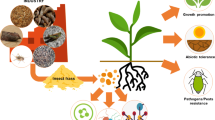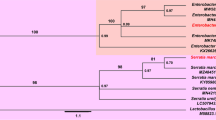Abstract
Though Eimeria is an important parasite of cattle, research is lacking on how the parasite persist in the pasture soils. In this study, feces samples were collected from three pastures in June and October 2010 and soil samples in April 2011. Coordinates of sampling locations were recorded with Global Positioning System together with information about grass cover, shade, and elevation. All soil samples were collected from the same locations as the fecal samples and used in model evaluating the possible factors influencing the concentration of oocysts in the soil. Feces and soil samples were investigated using a quantitative flotation technique. Eimeria oocysts were found in 95.6 % of fecal samples collected in summer and 84.5 % of samples in fall. In contrast, the same locations soil samples were positive for Eimeria oocysts in 37.3 % (summer) and 44.3 % (fall). Despite larger numbers of oocysts in fecal samples shed during summer compared to fall, there was no difference in the concentration of oocysts in soil samples the following spring. The odds of higher numbers of oocysts in soil samples in spring were higher if fecal samples collected in summer were in shade or if containing Eimeria alabamensis during the fall. Factors other than the concentrations of oocysts shed in feces appear to affect whether oocysts persist between grazing seasons.



Similar content being viewed by others
References
Bangoura B, Daugschies A (2007) Parasitological and clinical parameters of experimental Eimeria zuernii infection in calves and influence on weight gain and haemogram. Parasitol Res 100(6):1331–1340
Daugschies A, Najdrowski M (2005) Eimeriosis in cattle: current understanding. J Vet Med B Infect Dis Vet Public Health 52:417–427
Daugschies A, Akimaru M, Bürger H-J (1986) Experimentelle Eimeria bovis–Infektionen beim Kalb: 1. Parasitologische und klinische Befunde. Dtsch Tierärztl Wschr 93:393–397
Fitzgerald PR (1980) The economic impact of coccidiosis in domestic animals. Adv Vet Sci Comp Med 24:121–143
Hoblet KH, Shulaw WP, Saif LJ, Weisbrode SE, Lance SE, Howard RR, Angrick EJ, Redman DR (1992) Concurrent experimentally induced infection with Eimeria bovis and coronavirus in unweaned dairy calves. Am J Vet Res 53(8):1400–1408
Hooshmand-Rad P, Svensson C, Uggla A (1994) Experimental Eimeria alabamensis infection in calves. Vet Parasitol 53(1–2):23–32
Kemper N, Henze C (2009) Effects of pastures' re-wetting on endoparasites in cattle in northern Germany. Vet Parasitol 161(3–4):302–306
Larsson A, Dimander SO, Rydzik A, Uggla A, Waller PJ, Höglund J (2006a) A 3-year field evaluation of pasture rotation and supplementary feeding to control parasite infection in first-season grazing cattle-effects on animal performance. Vet Parasitol 142(3–4):197–206
Larsson A, Dimander SO, Uggla A, Waller P, Höglund J (2006b) Effects of single or concurrent infections with Eimeria alabamensis and gastrointestinal nematodes on the performance of calves on pasture. Parasitol Res 99(1):84–89
Lassen B, Ostergaard S (2012) Estimation of the economical effects of Eimeria infections in Estonian dairy herds using a stochastic model. Prev Vet Med 106(3–4):258–265
Lassen B, Seppä-Lassila L (2014) Recovery and sporulation of bovine Eimeria oocysts after exposure to sub-zero temperature. Vet Zoot Med. In press.
Lassen B, Viltrop A, Raaperi K, Järvis T (2009) Eimeria and Cryptosporidium in Estonian dairy farms in regard to age, species, and diarrhoea. Vet Parasitol 166(3–4):212–219
Lassen B, Lepik T, Bangoura B (2013) Persistence of Eimeria bovis in soil. Parasitol Res 112(7):2481–2486
Levine N (1985) Veterinary Protozoology. The Iowa University State Press, Iowa
Rehman TU, Khan MN, Sajid MS, Abbas RZ, Arshad M, Iqbal Z, Iqbal A (2012) Epidemiology of Eimeria and associated risk factors in cattle of district Toba Tek Singh, Pakistan. Parasitol Res 108(5):1171–1177
Rind R, Brohi MR (2001) Factors affecting the survival and sporulation of Eimeria oocysts of cattle. Pak J Biol Sci 4:487–491
Roepstorff A, Nansen P (1998) Epidemiology, diagnosis and control of helminth parasites of swine. In: FAO Animal Health Manual. FAO, Rome, pp. 51–56
Sánchez RO, Romero JR, Founroge RD (2008) Dynamics of Eimeria oocyst excretion in dairy calves in the Province of Buenos Aires (Argentina), during their first 2 months of age. Vet Parasitol 151(2–4):133–138
Svensson C (1993) Peripartal excretion of Eimeria oocyst by cows on Swedish dairy farms and the age of calves at first excretion. Acta Vet Scand 34(1):77–81
Svensson C (1995) Survival of oocysts of Eimeria alabamensis on pastures under different climatic conditions in Sweden. Acta Vet Scand 36(1):9–20
Svensson C (1997) The survival and transmission of oocysts of Eimeria alabamensis in hay. Vet Parasitol 69:211–218
Svensson C (2000) Excretion of Eimeria alabamensis oocysts in grazing calves and young stock. J Vet Med B Infect Dis Vet Public Health 47(2):105–110
Svensson C, Hooshmand-Rad P, Pehrson B, Törnquist M, Uggla A (1993) Excretion of Eimeria oocysts in calves during their first three weeks after turn-out to pasture. Acta Vet Scand 34(2):175–182
Svensson C, Uggla A, Pehrson B (1994) Eimeria alabamensis infection as a cause of diarrhoea in calves at pasture. Vet Parasitol 53(1–2):33–43
von Samson-Himmelstjerna G, Epe C, Wirtherle N, von der Heyden V, Welz C, Radeloff I, Beening J, Carr D, Hellmann K, Schnieder T, Krieger K (2006) Clinical and epidemiological characteristics of Eimeria infections in first-year grazing cattle. Vet Parasitol 136(3–4):215–221
Acknowledgments
Thanks to Ivi Novak and Erika Mägi for assisting in the sampling, Pikka Jokelainen for language editing, and Toomas Orro for statistical advice. Thanks to farmers who allowed us access to their pastures. Funding from the targeted financing project SF0170165s08 administrated by the Estonian Ministry of Education and Research and the grant ETF9433 from the Estonian Science Foundation.
Author information
Authors and Affiliations
Corresponding author
Rights and permissions
About this article
Cite this article
Lassen, B., Lepik, T. & Järvis, T. Seasonal recovery of Eimeria oocysts from soil on naturally contaminated pastures. Parasitol Res 113, 993–999 (2014). https://doi.org/10.1007/s00436-013-3731-6
Received:
Accepted:
Published:
Issue Date:
DOI: https://doi.org/10.1007/s00436-013-3731-6




